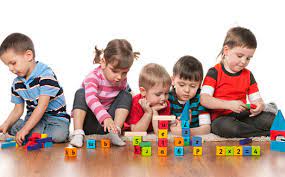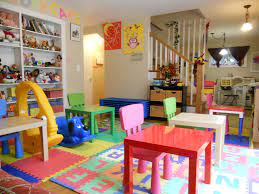A feasibility study for a preschool is essentially a comprehensive roadmap, detailing the steps and pathways necessary to establish a successful early childhood education project. This study focuses on conducting a thorough market analysis to understand the needs of children and parents, as well as determining the demand for kindergarten services. It also includes a financial feasibility assessment to estimate setup costs, operational expenses, and expected revenue, helping to project potential profitability. The study incorporates effective marketing strategies to attract potential clients, including appropriate promotion and pricing strategies aligned with market capacity. Additionally, it addresses an operational plan that covers curriculum design, selecting qualified teaching staff, and equipping the preschool with modern educational tools to ensure high-quality educational services. Furthermore, the study identifies available opportunities and potential challenges that the project may face, providing insights to make informed decisions about successfully launching the project.

The kindergarten project is a specialized educational institution that aims to provide educational and care services for children aged 3 to 6 years. The project focuses on developing children’s academic, social, and emotional skills to build a strong foundation for their growth through a comprehensive curriculum that combines educational and recreational activities, fostering a love for learning and innovation in young minds.
The project offers a safe and stimulating environment that encourages children to explore and engage positively, supported by a qualified teaching team with the experience needed to ensure a high standard of education and care. The kindergarten is equipped with the latest educational tools and modern technologies, along with dedicated spaces for play and interactive activities that help develop children’s motor and social skills.
The project includes a variety of programs that cover the basics of language and mathematics, in addition to activities that enhance creativity and life skills. It also focuses on instilling moral values and positive behaviors, preparing children for a smooth transition to the next educational stages.
Ultimately, we emphasize that a kindergarten feasibility study is the key to ensuring the project’s success—so request it now from Mashroo3k.



Executive summary
Study project services/products
Market Size Analysis
Risk Assessment
Technical study
Financial study
Organizational and administrative study

The Education Sector in GCC Countries
Because “Mashroo3k” Economic Consulting and Market Research Company believes in the importance of the education sector and its role in localizing national labor, it presents below the key indicators of the educational sector in GCC countries, thereby encouraging investment in this vital sector:
The total number of students in the Early Childhood Development stage (including nurseries and kindergartens) in GCC countries, according to the latest available statistics, reached 851.5 thousand students.
The number of school education students in the GCC was estimated at 9.3 million students (79.4% in the public sector and 20.6% in the private sector).
The number of adult education center learners was estimated at 181,247 students.
The number of higher education students was 2,206,446 students.
The number of early childhood education teachers was 50,647 teachers.
The number of school education teachers was estimated at 727,904 teachers.
There are 5,806 educational institutions operating at the early childhood stage.
There are 32,310 educational institutions operating at the school education stage.
Over the past years, governments in GCC countries have sought to bridge the gap between education and the labor market. They have adopted curricula that increase the share of vocational and technical education and encourage learning through modern media and technologies. It is also worth noting the increase in government spending by these six countries on education and its quality to graduate generations that meet the private sector’s labor needs.
According to the latest statistics:
Saudi Arabia spends 18.9% of its budget on education.
The UAE spends 14.8%.
Oman spends 12.2%.
Bahrain spends 9.8%.
Kuwait spends 12.3%.
Qatar spends 10.5% of its budget on education.
By the year 2023, the value of the private education market in GCC countries is expected to reach $26.2 billion.
The Global Education Sector:
The size of the global educational services market reached approximately $2,882.52 billion by the end of 2021, and global experts expect it to reach $3,191.79 billion by the end of 2022 — achieving a compound annual growth rate (CAGR) of 10.7%.
By 2026, the market value is projected to increase to $4,623.90 billion, achieving a CAGR of 9.7% over the forecast period.

By 2030, the global value of education as an industry is expected to reach $10 trillion USD.
By 2024, the global online education market is projected to reach $247.46 billion USD.
The AI-powered education market is expected to expand at a compound annual growth rate (CAGR) of 36% from 2022 to 2030.
In the year 2000, the number of pupils worldwide was approximately 657 million, and this number increased to 739 million by 2019.
In 2000, the number of secondary education students was around 452 million, rising to 601 million by 2019.